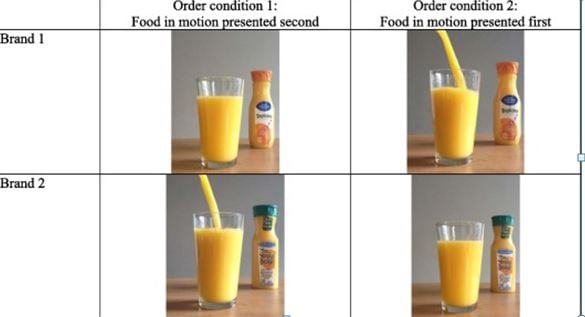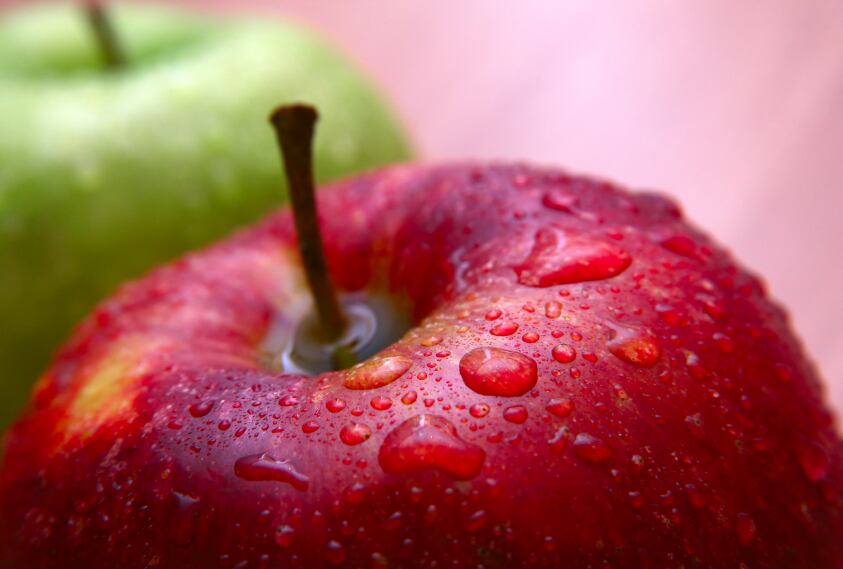Researchers from the Cornell Food and Brand Lab showed more than 160 participants pictures of two well-known brands of orange juice – one picture where the juice was being poured into a glass and another where the glass was already full.
The consumers rated the drinks in motion as significantly more appealing and fresh.

“The effects were obtained even with well-known national brands, for which perception of appeal should be fairly set. This attests to the robustness of these effects,” write the authors.
Co-author Aner Tal says: “Seeing your food moving makes it seem fresher, and consequently more appealing. We’re hard-wired to be attracted to motion, so moving objects not only capture our attention but look more appealing.”
Although many advertisements already display food in motion – even in cases where there is no longer a close connection between movement and freshness such as tinned or processed food – the scientists say this is likely due to professional norms, as the rationale behind its effectiveness was previously unknown.
Freshness is a key driver of consumer evaluations for a broad variety of foods, and is often taken as a key marker of quality. The authors suggest that marketers use pictures of food displayed in motion to encourage healthier food choices, making the foods appear more appealing.
The evolutionary trap: Are our instincts making us fat?
Sensitivity to motion is instinctual in humans – in hunter-gatherer societies it was an obvious sign of freshness – and this instinct has not left us. Even motion in inanimate objects can act as a reliable cue for freshness, write the study's authors, as running water is less likely to be contaminated by bacteria than stagnant water.
But sometimes such instincts can work against us in modern society, becoming an ‘evolutionary trap’. These are particularly evident in the food domain, write the authors.
“Tendencies that served humanity in primitive environments can be maladaptive in modern society. People possess an evolved tendency to be attracted to sugars and fats. In an environment with scarce resources, consuming as much of these nutrients as possible would have been a good survival strategy. However, in a modern environment of abundant resources this tendency can lead to obesity and related health problems.”

Another primitive association that food marketers make use of is the perception that vibrant colours are a sign of freshness - spraying water on fruit and vegetables in produce sections of supermarkets enhances their attractiveness for this reason.
Source: Food Quality and Preference Journal
“Fresh from the tree: Implied motion improves food evaluation”
Published online ahead of print, Vol. 46, pp. 160-165, doi:10.1016/j.foodqual.2015.07.015
Authors: Yaniv Gvili, Aner Tal, Monty Amar, Yeal Hallak, Brian Wansink et al.
